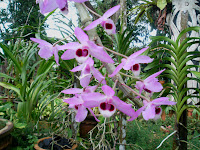
Now back at Bintulu, my instincts tell me to rush for the fish market. Fresh fishes is synonymous with Bintulu among many others like natural gas, deep water port, timber country, oil palm country and hydro-power. It has a vast expanse of open sea that reaches the coasts of Cambodia and Vietnam to the north, Thailand to the west and Philippines to the east. But more importantly the local Melanaus who are natural fishermen and sailors were once known to send the last of the remaining pirates off the coast of Bintulu and never to return back. Today they go fishing farther offshore and their catches are sold at the popular fish markets in town. All sorts and sizes of deep sea fishes are obtainable at the fish market. Compare to what I get in Kuching, I'll put Bintulu fishes at the 5- star status while Kuching's on the scale of a 3 -star for freshness and varieties of fishes at the market's tables. The types of fishes easily available are pomfret, tuna, red snapper, sharks, sting rays, cuttlefish and prawns.
My favourite market is the one located at the edge of the village called Kampung Baru. The fish market is built next to the Sebiew River and close to the local fishermen houses.
Today I decided to buy two young tuna fishes that would be smoked or grilled later at the farm.




































































